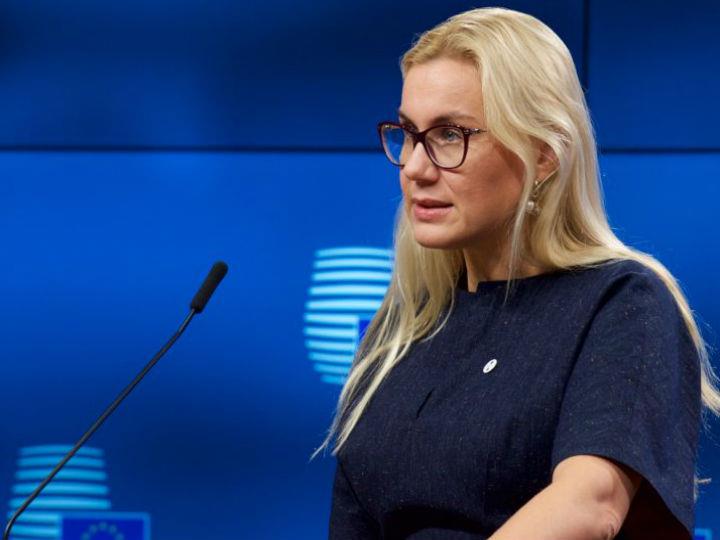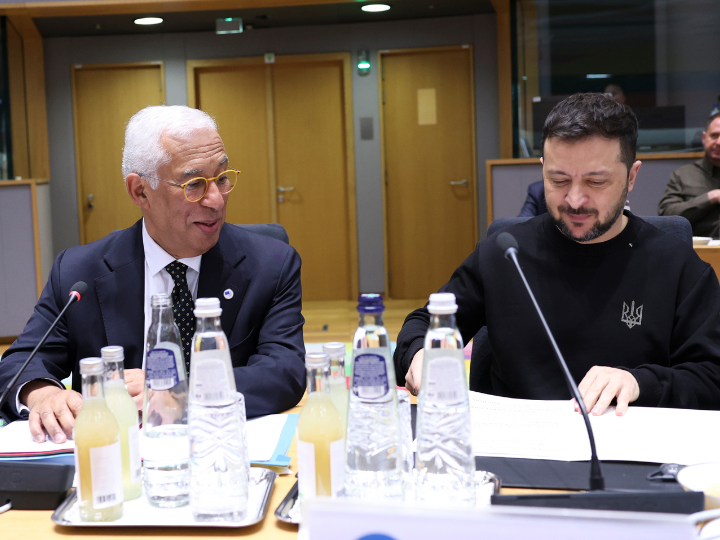by Kira Taylor
30% of the EU’s €1.8 trillion budget and recovery plan for 2021-2027 will be made available for the green transition. That amount is no longer up for negotiation and the focus must now shift to spending it well, said Kadri Simson, the EU’s energy commissioner.
“Naturally I understand the wish to have an even greater pool of funds available,” said Simson, who spoke at a EURACTIV event on Thursday (29 October).
“However, I think now it is important to have a rapid agreement on the recovery package and that the money is used well,” she added.
The European Parliament and EU member states are currently negotiating spending rules for the bloc’s next long-term budget and coronavirus recovery plan, whose overall amount was decided after marathon talks in July.
Under the July budget deal, 30% of EU funds will go into green investments such as renewable energy generation, renovating buildings and deploying electric vehicle recharging networks across Europe.
By 2030, all 27 member states will jointly need to reach 32% of renewable energy consumption, despite large differences in clean power generation among EU countries.
“We need to power up Europe with future proof green technologies and accelerate the use of renewables. Our future will largely be based on them,” Simson said.
A fair transition
However, that transition will only succeed “if it is seen as fair by the people,” the EU commissioner insisted.
“We are very much aware that EU countries are in different starting positions for the transition to climate neutrality,” she added in reference to Poland, which gets almost 80% of its electricity from heavily polluting coal plants.
And the transition away from coal will require an array of technologies, according to EU climate chief Frans Timmermans who has previously said countries more reliant on fossil fuels may not transition straight to renewables but use natural gas as a stepping stone out of coal.
“The total cost of reaching the EU’s climate change targets are an enormous burden for member states heavily reliant on coal,” said Wojciech Dabrowski, the CEO of Polish energy group PGE, which supported the EURACTIV event.
“There is an understanding for gas to be a transition fuel. That is very important for us because natural gas plays an important role in the short and medium term strategy of Polska Grupa Energetyczna,” he added.
James Watson, secretary general of industry association Eurogas, emphasised that there cannot be a “one size fits all” approach to the energy transition, saying it makes more sense to look at each country individually.
“From Eurogas, we believe there should be a certain degrees of flexibility for member states to make sure that they are able to pursue the pathways that they need to pursue to deliver their carbon and climate neutrality objectives,” he said.
However, countries must use EU money to progress towards a green future rather than subsidising failing, carbon-heavy industries, said Jorge Nunez Ferrer, senior research fellow at the Centre for European Policy Studies (CEPS), an EU affairs think tank.
The coal sector is declining with 60% of coal stations now facing negative cashflows and 80% already in decline. The losses are equal to the money being offered at EU level, said Ferrer, who highlighted the high cost of keeping the coal sector alive.
“When you’re on a sinking boat, keeping the passengers inside is not very wise,” said Ferrer. “Do not try to help sectors that are in decline by keeping them because you are not helping the people who are inside. Help them to move out in the right direction.”
According to Ferrer, a combination of conditional and flexible finance needs to be brought in to ensure investments are geared towards a stronger and more resilient economy in the future.
“I am absolutely convinced that every region, every country has to develop their own strategy,” said Ferrer.
Alignment between public and private investment
EU experts are currently discussing criteria for green projects under the bloc’s sustainable finance taxonomy – an EU regulation aimed at channeling private investments in sustainable industries.
But more consistency is needed on criteria for green projects, said Watson. Although carbon emission thresholds for specific industrial sectors are still being discussed, Watson expressed annoyance that private investment criteria may end up being stricter than the European Investment Bank’s own lending criteria.
“It seems illogical that the private sector would have a much tougher threshold to invest in sustainable compared to the public sector,” he said.
The taxonomy has two thresholds, one for green projects that make a positive contribution towards climate objectives and a less stringent one for projects which cause “no significant harm” to those objectives, said Chris Hurst, director general at the EIB.
The fear on the Polish side is that natural gas would not meet this threshold and miss out on private funding which the country needs to accelerate its coal phase out.
Dabrowksi said there were fears the taxonomy “will rule out state-of-the-art gas-fired generation by setting unfeasible limits” that will “increase costs of the energy transformation for those regions which still need to develop gas today as a replacement for coal”.
According to draft emission thresholds established by the European Commission under the green finance taxonomy, power plants fuelled by natural gas will not be classed as sustainable investments unless they meet an emissions limit that none currently comply with.
Under the taxonomy, technologies like combined cycle gas turbines would “no longer be considered sustainable from a private finance point of view whereas they would be considered sustainable from a public finance point of view,” according to Watson.
The EIB’s Chris Hurst agreed that private and public finance rules needed to be consistent.
“We do need an alignment,” he told participants at the EURACTIV event. “It’s also clear that different people are using different standards,” he admitted, saying his belief was that the EU’s benchmark will eventually be the green finance taxonomy.
State aid revision
Another source of funding for energy companies in the transition will come in the form of state aid from national governments. The EU’s state aid rules for energy and environment projects will be revised next year and adjustments there would also be welcome in order to support green gas projects, Watson said.
“What is missing from the state aid guidelines at the moment is hydrogen,” he said. “I think this is a very big oversight in the current world that we’re operating in,” he added, describing hydrogen as “a very viable fuel that we’ll use across all applications in Europe in the future.”
However, state aid should also avoid supporting failing, carbon-intensive industries, warned Ferrer. “There are also areas I think where state aid should be restricted if they are not geared towards a transition,” he said.
*first published in: www.euractiv.com




 By: N. Peter Kramer
By: N. Peter Kramer
